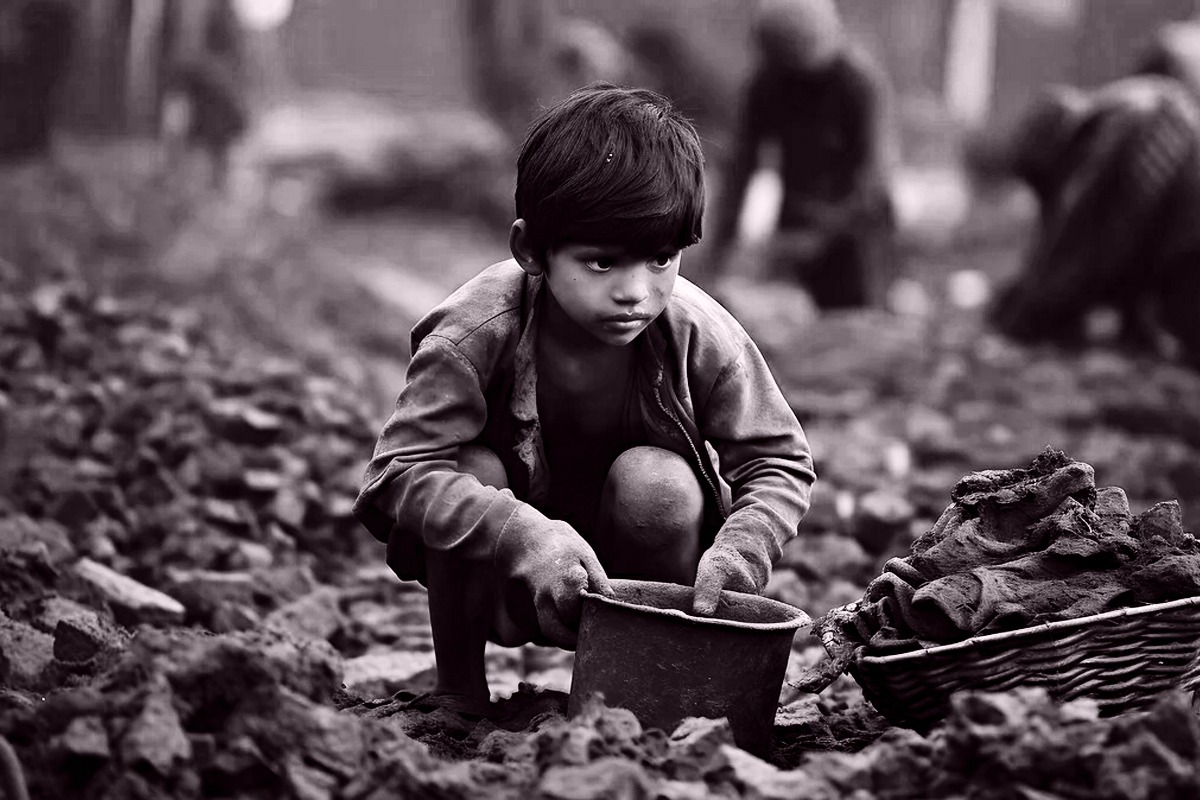
Many child labourers still struggle to get a decent education, even in the face of progressive laws like the Right of Children to Free and Compulsory Education (RTE) Act.

Child labour casts a long shadow over India, affecting millions of young lives and perpetuating a cycle of poverty and exploitation. In this article, we delve deeper into the multifaceted impact of child labour on the health, education, and overall well-being of children in India. By exploring historical struggles, existing laws, and real-life experiences, we seek to shed light on the hidden costs associated with this pervasive issue.
India’s history of child labour is intricately linked to the country’s socioeconomic structure. Children have been used as inexpensive labour in businesses ranging from agriculture to textiles since the colonial era. The Child Labor (Prohibition and Regulation) Act of 1986 is a notable legislative attempt to address this issue, although the situation on the ground is still dire. Children’s rights and welfare have been compromised by the continued exploitation of them due to a lack of effective enforcement mechanisms, societal standards, and economic pressures.
Although India has a strong legal structure in place to protect minors from being taken advantage of for labour, structural issues frequently make these rules less effective. Due to lax enforcement, scarce resources, along widespread corruption, many children are left open to abuse. Many child labourers still struggle to get a decent education, even in the face of progressive laws like the Right of Children to Free and Compulsory Education (RTE) Act, which ensures education for all children. Setting priorities for the enforcement of current laws and addressing these structural obstacles are essential components of any effort to stop child labour.
Through focused measures and policy changes, India has achieved tremendous progress in the last few years in combating child labour. Child labourers are intended to be rescued and rehabilitated using education and chances for skill development, such as those offered by the National Child Labor Project (NCLP). Still, there are obstacles to the successful abolition of child labour because of the continuation of socioeconomic inequities as well as shortcomings in implementation and enforcement. Achieving long-lasting change requires comprehensive initiatives that address the issues that contribute to child labour, such as social isolation, poverty, and limited access to school.
Due to dangerous working circumstances and lack of access to necessary healthcare services, child labour has a catastrophic negative impact on children’s health. Injuries, diseases, and long-term health issues are more common among children working in construction, mining, and agricultural industries. Furthermore, children’s mental health can suffer greatly from the psychological trauma linked to exploitative labour, which can result in anxiety, despair, and overwhelming hopelessness.
Children’s right to an education is denied by the prevalence of child labour, which also contributes to the intergenerational cycle of poverty and illiteracy. For financial reasons, many child labourers are compelled to leave school, denying them the chance to learn the skills and information they need for a better future. Millions of underprivileged children continue to live in poverty because they are unable to receive high-quality education, even despite laws guaranteeing free and compulsory education.
Child labour causes children to lose their youth and become vulnerable to exploitation and abuse, worsening their general well-being and dignity. These effects go beyond the immediate physical and educational consequences. A cycle of poverty and vulnerability that spans generations is perpetuated when children lack the chance to grow and thrive in the absence of a caring and supportive environment. Children’s entire well-being must be given top priority in the fight against child labour, with attention paid to both the systemic injustices that underpin the children’s exploitation and their immediate needs.
India has a comprehensive legal framework to address child labour, including the Child Labor (Prohibition and Regulation) Act, the Right of Children to Free and Compulsory Education (RTE) Act, and various state-specific laws and regulations. These laws aim to prohibit the employment of children in hazardous occupations, regulate their working conditions in non-hazardous sectors, and ensure access to education for all children. Despite legislative efforts, challenges remain in enforcing laws, addressing socio-economic disparities, and changing cultural attitudes towards child labour.
Implications for well-being, youngsters who work as youngsters lose out on the chance to play, study, and develop in a secure and supportive setting, therefore depriving them of their childhood. Children’s physical and mental health suffers because of working long hours in abusive environments, which causes weariness, tension, and emotional discomfort Child labour traps children and their families in a cycle of deprivation and marginalization that exacerbates poverty and vulnerability.
In conclusion, there are still many unanswered questions about child work in India, which has serious consequences for kids’ general well-being, health, and educational prospects. A great deal more work must be done to guarantee the efficient application of the law and the defence of children’s rights, even if targeted interventions and legislative actions have made great progress in tackling this issue. We can build a world in which every kid has the chance to flourish, free from exploitation and suffering, by tackling the underlying causes of child labour, funding social support and education, and enabling communities to push for change. Together, we can ensure that the rights and dignity of India’s children are respected and that their potential is realized so that they can contribute to the creation of a better tomorrow.
The authors are law scholars from Kashmir University and are interested in women’s rights, good governance, judicial activism, social justice and environment conservation, respectively.